
Have you ever worked in a mind-numbing cubicle? I did when I was younger, and I hated it.
Being stuck in a cramped cubicle lit by overhead fluorescent lights, wedged between dozens of coworkers whose phone conversations and keyboard strokes—as well as bodily odors and noises—sucked a little bit of life out of me every single day.
My cubicle experience made me feel like a white-collar prisoner, and I knew this was not how I wanted to spend my professional life. I needed to either move up the company ladder or start my own business.
Maybe I’m just a crybaby, because tens of millions of people toil in cubicles every day.
The cubicle, created by office furniture maker Herman Miller, has been around since 1968 and must have contributed to thousands of white-collar suicides, but it is solidly entrenched in American business life today and generates more than $3 billion in annual sales.
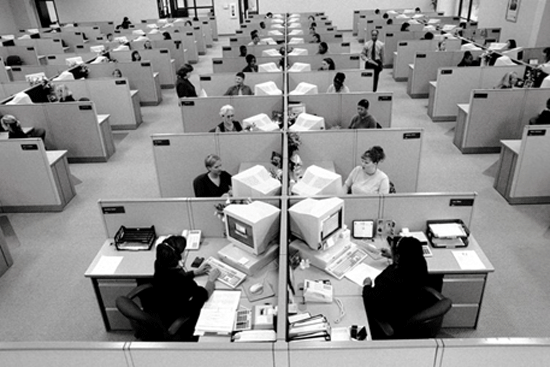
More importantly, I consider the office furniture business to be an extremely useful economic indicator. After all,
businesses only buy large amounts of office furniture—including the dreaded cubicle—when they are expanding their workforce and growing.
That is why my bear market antenna started to twitch when I read what two of the largest office furniture and cubicle manufacturers in the world had to say.
Cubicle Hell Warning #1: If you’ve ever worked in a cubicle, the odds are good that it was made by Steelcase, a manufacturer of a wide selection of office furniture, including what they call “seating products,” aka cubicles.
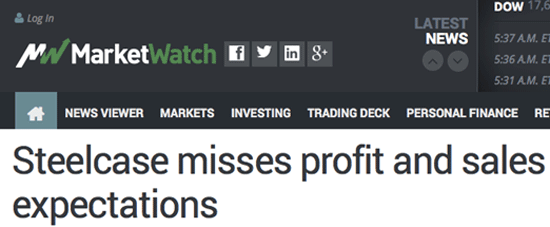
Steelcase reported its quarterly results at the end of December. The company surprised Wall Street with a very pessimistic outlook, warning that the next two quarters would be worse than previously forecast because of declining sales.
- Quarterly revenue came in at $787.6 million; a 1.6% year-over-year decline. However, Steelcase warned that its sales could fall to $720–$745 million, roughly a 2% decline.
- Steelcase management said it expects to make per-share earnings of 20 to 24 cents in the current quarter, below the 25 cents Wall Street predicted.
- Cash on hand fell by 6.9%, and inventories increased by 2.4% in the last 90 days.
- Steelcase’s biggest customers cut back the most. Big orders—defined as at least $3 million—fell 20% in the last quarter.
Steelcase stock suffered a 20% haircut on the news.
“The thing that was most pronounced was … a decline in orders from large customers and a decline in large projects,” Steelcase CEO Jim Keane said. “At the same time, order growth in the US furniture industry has slowed, as has overall US business capital spending. Our orders and pipeline at the end of the quarter showed fewer large projects than last year.”
The industries that cut back the most were insurance, energy, information technology, and financial services.
Cubicle Hell Warning #2: Herman Miller may be best known for its ultra-comfortable work chairs, but its specialty is selling bulk orders of cubicles to the biggest corporations in America.
.
However, its bread-and-butter customers are cutting back.
“I’d say if there is anything that you will hear out there, certainly the size of projects continues to be on mid-to-smaller size. There [are] not as many very, very large things out there, at least that we can see,” said CEO Brian Walker.
The drop in big orders resulted in a sales decline from Herman Miller’s largest sector, North America, for just the second time in the last 17 quarters.
Moreover, 2015 per-share earnings of $1.82 are still lower than 2007 ($1.98) and 2008 ($2.56).
Cubicle Hell Warning #3: HNI Corporation is another publicly traded office furniture maker, and its business has fallen off a cliff.
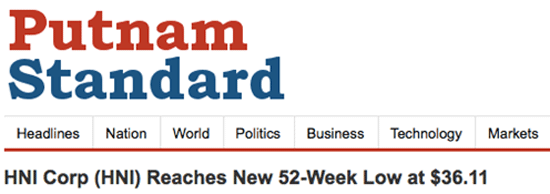
Sales growth at its office division was chugging along at a healthy pace; +13.7% in Q1 and up +6.4$ in Q2. However, sales growth turned negative in Q3, and forward guidance projected an acceleration in the decline to a range of negative 3% to negative 7%.
No wonder that HNI’s stock recently hit a new 52-week low. Remember, stocks that hit new 52-week lows almost always do so for very good reasons.
Cubicle Hell Warning #4: The Business and Institutional Furniture Manufacturers Association, or BIFMA, hears chatter from hundreds of its members.
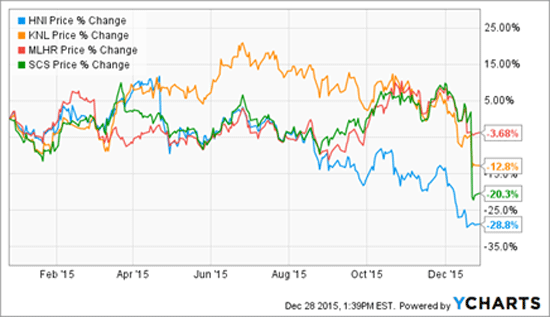
Wherever the sector is heading, it isn’t positive. BIFMA reported a sharp decline in office furniture order growth—from 10% early in the year to 3% in the last couple months.
A Good Crisis Indicator
The ups and downs of the office furniture business is not a standalone indicator that you can use to time the market. It is, however, a very good advance indicator of overall economic health.
And if the above cubicle hell warning signs are any indication, our economy is headed for a severe slowdown. So unless you want to put your portfolio through cubicle hell… you better have a strategy to protect it when bad times come calling.
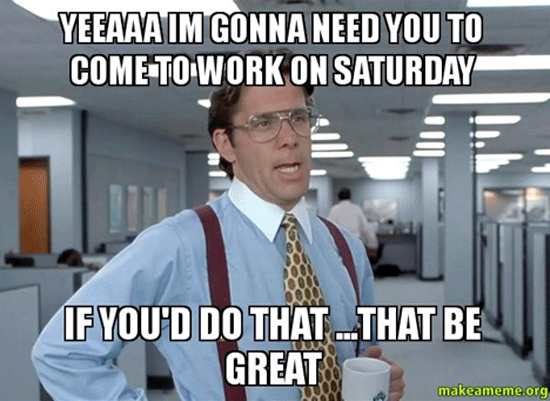
That doesn’t mean you should rush out and sell all of your stocks tomorrow morning, but it does mean that you should crank down the volatility of your portfolio.
You see, everybody loves volatility when stocks are rising, but everybody hatesvolatility when the stock market heads south.

Tony Sagami
30-year market expert Tony Sagami leads the Yield Shark and Rational Bear advisories at Mauldin Economics. To learn more about Yield Shark and how it helps you maximize dividend income, click here. To learn more about Rational Bear and how you can use it to benefit from falling stocks and sectors, click here












